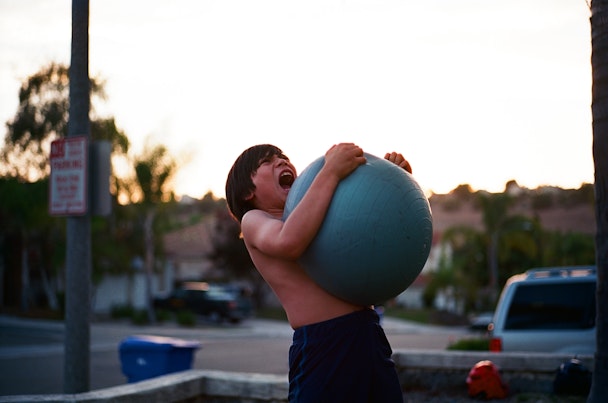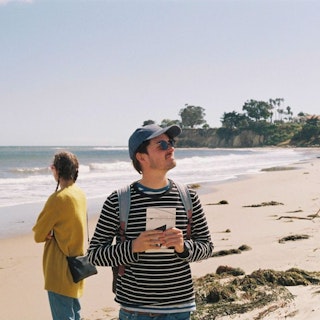Creativity in a pinch: how adland navigates strife and downturns
With inflation, material shortages, and cost of living crises, people and businesses around the world are feeling the pinch. Nobody reasonable would look forward to downturn, but necessity is the mother of invention and history shows us that times of struggle can encourage leaps of creativity. How are advertisers and brands getting creative in this particular time of strife, and how will the industry weather the difficult times ahead? We asked 7 agency leaders from The Drum Network.

What does agencyland do in a squeeze? / Vance Osterhout via Unsplash
Tim Walsh, UK head of strategy, Momentum Worldwide
Creativity loves a crisis, but compassion and context will really win the day.
Big and broad inherently feels beautiful, but despite its initial limitless appeal, there is something weirdly daunting and rudderless about creative thinking without restriction. Nothing to fight, solve or maneuver. Urgh.
We know from history and psychology that creativity and innovation arise in times of crisis, so with 83% of Brits experiencing a rise in the cost of living in 2022, UK consumers are in the midst of a crisis like no other. They need brands to step up and offer a real difference.
Some brands are delivering impactful action: Microsoft with free training courses to people out of work during the pandemic, or Eurostar and AirBnB with free travel and accommodation for Ukrainians seeking refuge.
It’s essential that we produce creative solutions that are not only novel but also appropriate: useful, valuable and relevant.
Creativity will always be king in times of crisis, but consider a few other Cs, as the year of the squeeze truly hits.
Compassion: does it have heart and humanity at its core? Consideration: does it do anything to improve the prospects of your audience? And context: are you doing enough to understand other contributing factors in your audiences' lives?
Allie Webb, marketing and innovation strategist at Coegi
When clients have a limited budget compared to competitors, we must strategically focus more on the research portion of the customer journey. Why? Because 30% of people go with a different brand once they start researching. This allows us to draft off of the broader awareness spend of major players in the space while capturing attention by highlighting key differentiators of our brands. From there, we test creative messaging and corresponding audience engagement.
Brands can improve efficiency by taking a digital-first, test and learn approach. These flexible placements, such as paid social or programmatic media, act as Petri dishes to gain meaningful data before investing in upfront mass media buys or other hyper-premium placements. By testing first, you can move your brand forward with certainty and efficiency, while never losing the appetite for continuous learning and improvement.
Ben Ducker, executive creative director at Journey Further
Brands can adapt to the changing landscape (at speed) by being efficient with reactive content. When planning and shooting hero video assets – be that for TV or digital delivery – it can be cost- and time-efficient to plan ‘B-cam’ content into a shooting schedule.
By piggy-backing on hero production, you'll save time on separate productions and create a consistent look across campaign assets. This will help to build brand memory structures in the long term.
The outcome should be a library of highly flexible video content that (with some smart creative thinking and copywriting) you can repurpose in the form of statics and short video content to quickly respond to contextual events. From football scores to news headlines, brands can have an opinion and start a conversation on the latest subjects and remain relevant no matter the landscape.
Ben Marshall, creative director at Jaywing
Today’s diverse brandscape has birthed the next generation of advertising agency, one that’s evolved to offer deep insights to clients across multiple media science disciplines, and turn information into strategy and art. Agencies are engaged with increasing rates of technological adaptation and rapid evolutions in marketing and creative. From AI to effectiveness, to behavioral science, the industry is changed forever. As peer-to-peer learning across multiple media science disciplines converges with creative, rich information inspires creativity that enables brands to perform. Creative solutions are still driven by artistry and clever ideas; it’s just that they're supported with data which tells us who we're marketing to. We have a bird’s-eye-view of tribes and more granular insights on individuals, so we can create content that is more relevant and effective than ever.
By going to great lengths to understand audiences, we can be where people are. Empathy in times of uncertainty is a stalwart fallback that steers the ship. It’s not only a creative essential; it’s a human/social responsibility.
Emma Grace, co-chief executive officer and executive director of PrettyGreen Group
Creative PR has always been the bargain of the agency mix. And it thrives in a pinch, because the creative PR agency can do with £100k what the ad agency would charge £1 million for.
The perceived risk involved with the 'will it fly or die?' nature of creative PR campaigns means that historically the budgets allocated have been reflective of the ‘not guaranteed’ nature of the discipline.
But time has moved on. Creative PR has evolved.
Wise clients now realize that it’s better to start a creative campaign journey knowing they want it talked about and starting (not ending) with the PR gaze. The extensive PR armory and layering of content, influencer marketing, social media, experiential and media partnerships alleviate the ‘will it work though?’ risk.
But while the scope of PR has changed, the budget splits haven’t followed suit. One PrettyGreen client’s PR achieved 68% of all OTS with just 12% of the spend in 2021. The client swiftly increased PR fees.
Creative PR is the brilliant Aldi Aisle of the marketing mix. You can find some absolute gems for 1/5 the cost. Clients just need to try a different type of shop and they will never spend as much again.
Dan Srokosz, head of creative at AgencyUK
The Dr. Will’s ‘Support our Sauce’ campaign stands out as a great example of overcoming commercial adversity. Activating a challenger brand’s major supermarket listing is a tall enough task, but doing so with no budget in a global pandemic is next-level. Their solution is testament to the power of a clever social strategy informed by a rock-solid brand strategy.
Like all good brands, Dr. Will’s has a meaningful difference. Their product is entirely natural and they were co-founded by a Doctor. Throw in an active desire to reduce the amount of salt in our diets, and we have an authenticity that transcends the market.
Their campaign elicits direct action from their customers by bringing their meaningful difference to life through unpolished, emotional messaging. Their promise of donating £10,000 worth of sauce to UK food banks if they sold 10,000 bottles of product tapped into the strange sense of national unity at the time—the genuine concern for the wellbeing of total strangers (we all felt it, right?). Why wouldn’t you want to help someone less fortunate if all you had to do was buy a bottle of ketchup?
Andy McLane, creative director at Anything is Possible
The world of ad creatives has taken a lesson from the film industry, and evolved to an increasingly freelance economy. It gives agencies and advertisers access to a diverse range of practitioners and has put a lot of power back in the hands of the creative industry, who might have had to go cap-in-hand for whatever they can be paid for their services.
This has leveled up smaller agencies against the big beasts who hold a large creative department on the bench. Managing a distributed creative network takes a good rapport with a trusted black book of collaborators. And it allows us to navigate a fluctuating balance sheet. But the main benefit is flexibility and agility.
My only nagging doubt is how well young creative people coming into the industry are being looked after and given the room to make mistakes and learn. Helping the next generation of creatives has always been a sacred covenant and it's incumbent upon the creative industry to remember to look after our own.
Content created with:

PrettyGreen
We are PrettyGreen. An Independent, Award Winning Agency for communications Less Ordinary We do creative less ordinary. Creative less obvious. Less cringe surveys....
Find out more
Jaywing
At Jaywing, we’ve made it our mission to help clients establish concrete foundations in a world of shifting sands. As a data-powered integrated agency, we bring...
Find out more
Journey Further
Journey Further is a performance brand agency based in Leeds, Manchester, London and New York.
Designed to deliver Clarity at Speed for the world’s leading...

Coegi
Coegi is an independent digital agency providing services across digital strategy, media buying, paid social, search and influencer campaigns. We bring together...
Find out more
Momentum Worldwide
Momentum Worldwide is a global experience agency partnering with and transforming the world’s most famous brands since 1987. Built on the simple truth that it’s...
Find out more
AgencyUK
We’re an independent brand communications agency voted Ad Agency of The Year 2019 and Brand Strategy Agency of the Year 2020 by Drum Recommends. Our services span...
Find out more
Anything is Possible
Media. Creative. Technology.We bring it all together like no other agency.
That's why we say:Anything is Possible.

